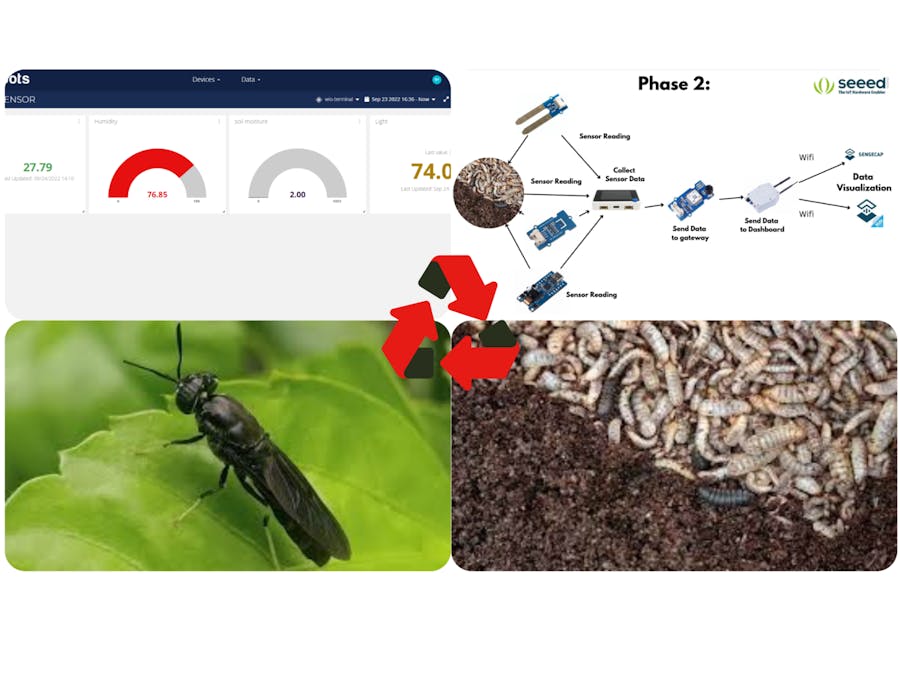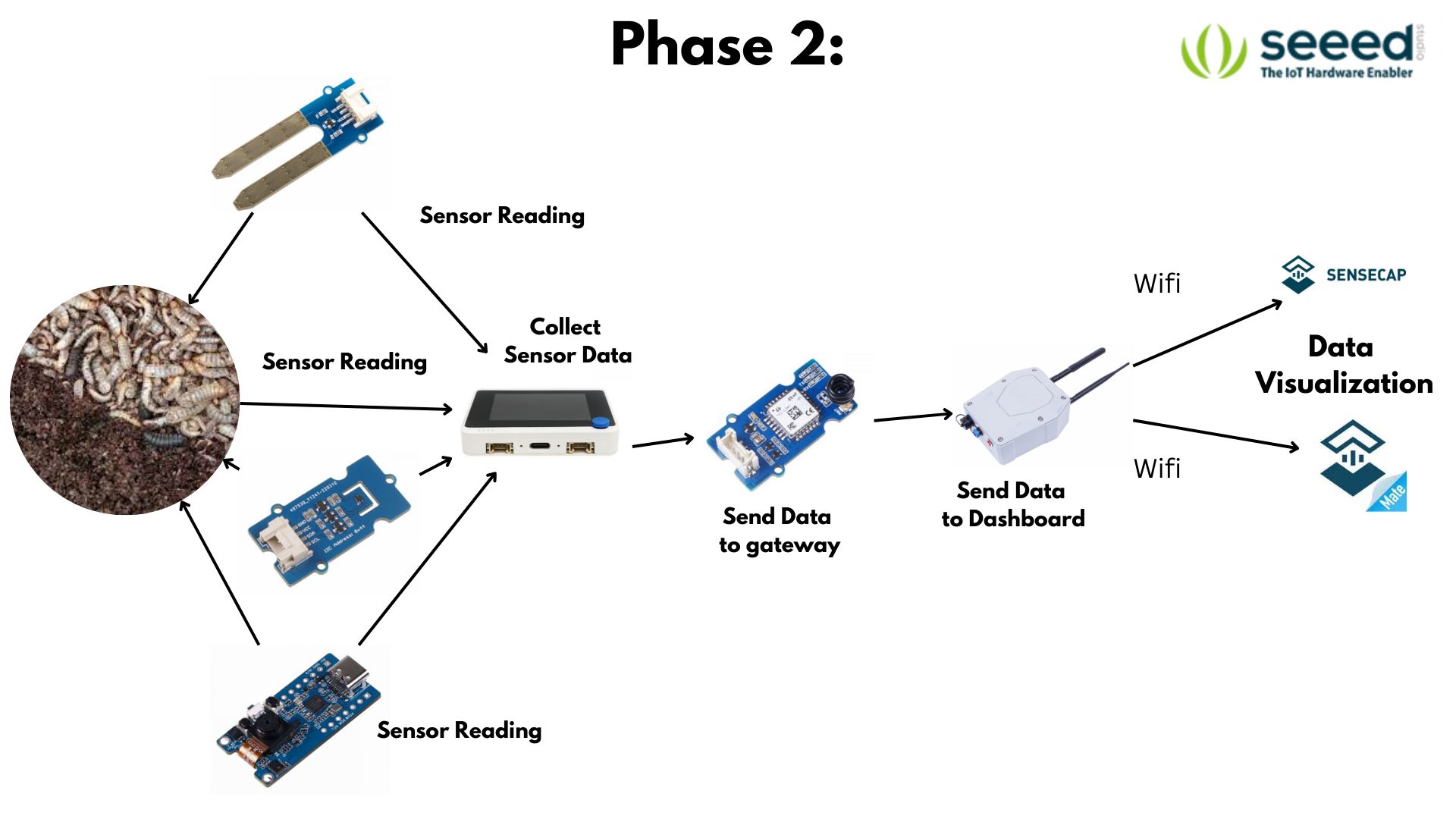The Hermetia illucens or Black soldier fly (BSF) is an insect native to Africa that as a larvae can consume as much as 70% of its own body weight in waste every day. For every kilogram of organic waste it consumes, 50 grams of protein are produced. We use the larvae of this fly to recycle nutrients in food waste and become the protein content for chicken or fish feed.
The challengeThe global population is growing at unprecedented rates and is estimated to reach 9.1 billion by 2050. The Food and Agriculture Organization (FAO) has stated that in order to sustain such a population, world food production will need to rise by 70%.
Producing meat takes a lot of input. For instance, in order to produce 1 kilogram of meat it takes anywhere between 2 – 7 kilograms of feed depending on the livestock. To grow this feed large swathes of forests are being cleared putting species at risk. In 2010, agricultural production accounted for 70% of the global freshwater consumption with more than half of all this agricultural production going to feed livestock. Studies have shown that at the current rate of consumption, there will not be enough available fresh water to irrigate croplands to feed estimated populations in 2050.
Of the feeds currently fed to chickens, pigs and farmed fish, they all require high levels of protein. At the moment that protein comes from Soy or Fish Meal. The inputs to produce both of these consume natural resources and are being consumed at an unsustainable rate.
Current Protein sources:Soy: For soy researchers estimate that millions of hectares of rain-forest has been cleared causing widespread deforestation, species extinction and pollution. According to the WWF, soy is the second largest agricultural driver of deforestation worldwide, behind beef. There was 113 million hectares used to grow the soy produced in 2013/2014, which is an area the size of the UK, France and Germany combined. Around 75% of all that soy was used as animal feed
Fishmeal: Poultry and aquaculture use fish meal as feed due to its high protein content. In 2012, around 85% of global fish stocks were over-exploited, depleted, fully exploited or in recovery from exploitation. One way around this would be to stop depleting the natural supply of fish and start to farm fish commercially as we do with other livestock. However, the current feed for farmed fish is made up almost entirely of other fish. Some fish require as much as 1-8 kilograms of wild fish to create 1 kilogram of farmed fish.
The challenge of waste:In Africa, waste is a real challenge for rapidly urbanising cities. The proper disposal of waste and necessary infrastructure is a heavy cost for cities and residents that they often cannot afford. For this reason African cities find themselves ranked as some of the dirtiest cities in the world with large amounts of waste not being disposed of properly. What is more, the vast amount of waste in African cities is organic waste, over 50% in many places. When organic waste goes to a landfill it releases serious amounts of methane, a very harmful greenhouse gas. According to the UN, rotting food waste accounts for 7% of the global greenhouse gas emissions.
Fun Fact:It is estimated by 2033, the BSF market to grow by 30.5%, resulting in approx 8000 tons due to rising global meet demands, growing aquaculture industry, increased demand from animal feed manufacturers as well as extensive government support resulting in the boost of BSF farming.
According to an overview of the World Bank, modeling of potential widespread BSF farming shows Africa could use BSF larvae to replace 60 million tons of traditional feed production and organic fertiliser. Creating 15 million jobs, preventing 86 million tons of carbon dioxide equivalent emissions and producing possible market value of crude protein worth up to US$2.6 billion and fertiliser worth up to US$ 19.4 billion
Parameters for successThe main parameters that need to monitored continuously are temperature, humidity, light intensity, and moisture. Ideally, there needs to be sufficient lighting to promote the BSF mating, the temperature needs to be between 26-28 deg C and humidity between 60-70%. The moisture level in the substrate needs to be sufficient for the BSF eggs to hatch into larva within 3-4 days to ensure it doesn't harden over time, preventing the larva from moving around.
Harvest Process:1.Getting the eggs: The eggs are removed from the BSF nests and placed into a container of grinned corn cob/ rice husk that has sufficient moisture. This would be the source of warmth as well as food for the eggs to start off with.
2. Prepping the sensors for monitoring: We decided to keep the trays inside our space to ensure we could monitor the parameters safely, at the same time ensuring the conditions would be ideal in a closed room/space.
3. Connecting to Ubidots and monitoring parameters: Since we are not in campus all the time, we decided to create an online platform to monitor/acquire sensor data via Ubidots to ensure we could stay and understand the conditions within the tray.
4. After 3-4 days of continous monitoring, we have hatchlings!: The successful outcome within 3-4 days of continuous monitoring proved vital and we were successful. We had thriving larva and began hatching successfully.
5. Feeding and continuous monitoring: We have to keep an eye on the food intake usually every 3-4 hours as the larva tend to eat a lot during the early stages. Eventually, as they grow, they change colour to stage between brown and black, where they begin preparing for pupation and hence stop eating completely.
Celebrating our success:- Power cuts would lead to no sensor data on the dashboard, hence catastrophe. It would get so humid to the point where the larva would crawl out of the containers resulting in a mess.
- Ants infestation: Ants would usually find their way into the trays and eventually pick up the eggs or even the small larva which would need to be closely monitored based on the placement of the trays. Hence needed to place them on stools while at the same time ensuring the legs of the stools were either lubricated with car grease or placed in water containers.
- We are currently working on the AI camera module to monitor the larva behaviour based on the atmospheric conditions
- Connecting WioTerminal to Lora gateway as well as other SenseCap sensors to monitor BSF weather conditions to ensure maximum egg production with thriving conditions

















Comments
Please log in or sign up to comment.